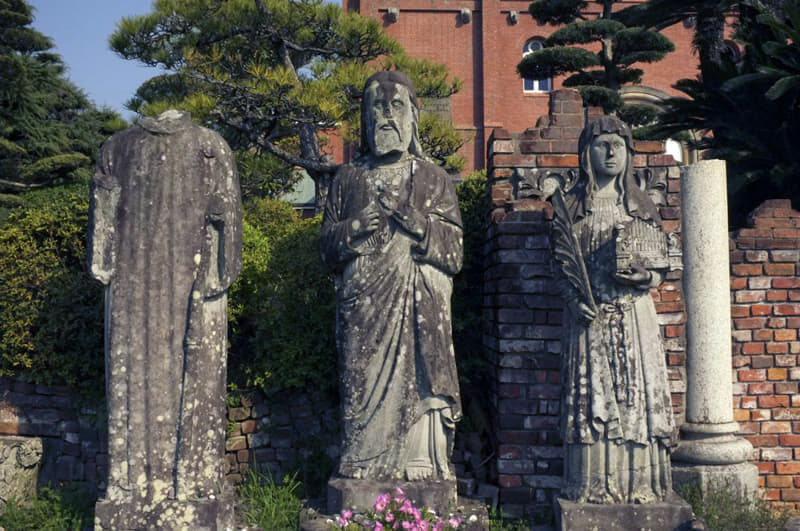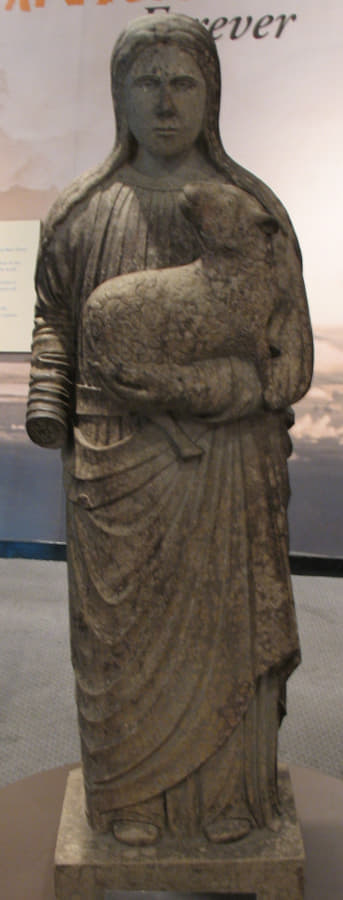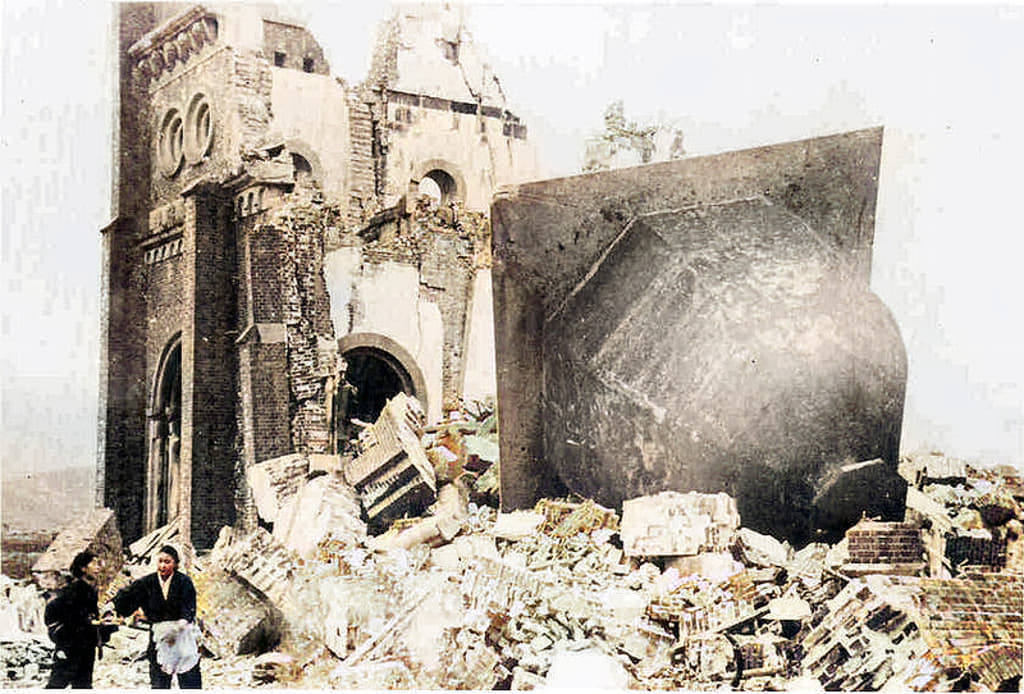August 9, 2023 is the 78th anniversary of the destruction of the oldest, largest and most historic Catholic community in Japan, that of the Urakami District of Nagasaki, whose Cathedral of the Immaculate Conception lay 1,650 feet beneath the airburst of the 21 kiloton Fat Man plutonium bomb.
Faith and Martyrdom in Nagasaki
The Catholic Faith was first brought to what is now the Nagasaki Prefecture by Saint Francis Xavier, following his arrival in Japan in 1549. The first Catholic missionary to evangelize the town of Nagasaki was a Portuguese Jesuit, Father Gaspar Vilela, who erected a church on the site of a pagoda in 1569.
The harvest of conversions was plentiful. By 1587, there were three parish churches and numerous chapels in the former fishing village, which was then growing into a city and a major seaport. Buddhism and Shintoism had all but disappeared from within its municipal confines.
By 1588, the year that the first Catholic diocese was established in Japan — the Diocese of Funai, centered on Nagasaki — there were at least 200,000 Catholics in the Land of the Rising Sun. Some place the figure above a half million.
Persecution however, would soon follow. Beginning in 1587, the Imperial Regent and Chancellor, Toyotomi Hideyoshi, influenced by the Bonzes — Buddhist monks — issued the first prohibitions directed against the missionaries.
The pagan monks, affronted by the dramatic growth of Catholicism in their country, bore false witness against the Jesuit and Franciscan missionaries, accusing them of territorial ambitions within Japan, on behalf of the then united Spanish and Portuguese Crowns.
In this lethal calumny they were to be abetted, later, by Protestant Dutch and English merchants and sea captains who hated the Catholic Faith.
In 1597, the Twenty Six Martyrs of Japan — Saint Paul Miki and Companions — were crucified in Nagasaki, the first of hundreds of thousands of Catholics to suffer for the Faith in Japan.
In 1614, Catholicism was proscribed in Japan and would remain so until 1873. For the next two and a half centuries, Nagasaki would give seed to the Church through the blood of her martyrs.
Dominicans, Franciscans, Jesuits and lay Catholics would die there in 1622, followed by Augustinian Recollects in 1632. Martyrdoms would continue until the end of the 1850’s.
When the first Catholic missionaries returned to Japan in 1865, they discovered the extraordinary phenomenon of a clandestine church, the church of the “Hidden Christians,” consisting of thousands of secret Catholics living near Nagasaki, and existing, impoverished, on the very margins of Japanese society. They kept the Faith, without priests and without most of the sacraments, and without contact with the outside world, for 250 years.
It is no wonder that Nagasaki has been described as the “heart and soul” of Japanese Catholicism and the “Cradle of the Catholic Church,” in Japan.
After several years of de facto toleration, the ban against Catholicism in Japan was finally lifted in 1873. Nagasaki then resumed its place as the religious and cultural center of the Catholic community.
As early as 1866, the Apostolic Vicariate of Japan was located in Nagasaki. The Diocese of Nagasaki was erected in 1891. By 1925, the great Romanesque Cathedral of the Immaculate Conception, the largest Christian church in East Asia, was completed, to the immense joy of the Catholics of the city.
A saint of modern times was among those who preached the Gospel in Nagasaki. Saint Maximilian Kolbe spent six years in Japan, from 1930 to 1936. In 1931, the Polish martyr founded a Franciscan convent on the outskirts of the city.
The Bomb
Shortly before 11 am on Thursday, August 9, 1945, three Silverplate (nuclear capable) Boeing B-29 Superfortresses of the 509th Composite Bombardment Group, of the Twentieth United States Army Air Force, approached the City of Nagasaki, at an altitude of 29,000 feet.
The aircraft had left Tinian, in the Marianas, eight hours earlier. Upon the completion of their mission, they would land in U.S. occupied Okinawa.
The lead plane, the weather reconnaissance plane, was the already famous Enola Gay, which had dropped the first atomic bomb, Little Boy, on Hiroshima, three days before.
The second plane, the observation aircraft, carrying cameras and measuring instruments, was The Great Artiste.
The third B-29, Bockscar, carried a plutonium implosion atomic bomb named Fat Man. The aircraft was piloted by Major Charles W. Sweeney, an Irish American Catholic from Lowell, Massachusetts.
At 11:02 am, 43 seconds after its release from the bomb bay of the B-29, Fat Man exploded, with force of 22,000 tons of TNT, over Urakami District of Nagasaki, 1,650 feet above Immaculate Conception Cathedral.
The population of Nagasaki in 1945 was, officially, 263,000. Because of conventional bombing raids, thousands of children had been evacuated to the countryside. There were, perhaps, less than 200,000 residents remaining in the city on August 9th.
Of these, 40,000 were vaporized in a millisecond. Another 34,000 would die from burns, blast injuries and radiation poisoning before the end of the year. Because of the long term effects of radiation sickness, and the cancers it engenders, the total fatalities, according to the U.S. Department of Energy, may have approached 140,000.
Nothing survived within a kilometer of the epicenter. Everyone in the Cathedral died. The physical destruction was horrific, with 14,000 homes incinerated.
Saint Maximilian Kolbe estimated that there were a 100,000 Catholics in Japan in the 1930’s, of whom 60,000 lived in the Diocese of Nagasaki. Of these, 12,000 lived in the city itself, in the Urakami District.
Mortality estimates for the Catholic community range from 8,500 to 10,000 dead. This means that somewhere between 71% and 83% of the Catholic population of Nagasaki was destroyed, with perhaps as much as ten percent of the entire Catholic population of Japan killed in a single mass casualty event.

Ironically, only 150 Japanese military personnel died in the bombing, but the bomb killed 2,000 Korean forced laborers.
Although the plutonium bomb used at Nagasaki had, at 21 kilotons, a 40% higher yield than the uranium device detonated over Hiroshima, it produced less than 29% of the initial fatalities.
This was because the port city of Nagasaki, like the American seaport of Boston, is a geological basin, surrounded by a ridge formation. This contained the blast. Providentially, Saint Maximilian placed his convent on the reverse side of the mountain overlooking the city. It survived.
Why Nagasaki?
Suspicions remain as to why and how Nagasaki became a target for the atomic bomb.
Nagasaki was added, at the last moment — on July 24th or later — by an unknown hand, to the target list.

According to U.S. Army Air Force protocols, it should never have been on the list at all, as it was not pristine, having been firebombed four times by the B-29s of the Twentieth Air Force.
The U.S. Strategic Bombing Survey wanted only completely undamaged targets to measure, more accurately, the blast and incendiary impact of the atomic bomb.
Another mitigating factor was the presence of 884 Allied prisoners of war in the city — British, Dutch and Australian — who worked as forced labor in the two Mitsubishi factories.
Major General Leslie Groves, the head of the Manhattan Project which developed the A-bomb, was the chairman of the target list committee. He later claimed, implausibly, that he had no idea of how Nagasaki made the list.
Nearly eight decades on, the Nagasaki target map remains missing from the National Archives.
Kyoto, Hiroshima, Yokohama, Kokura and Niigata were on the initial target list. Yokohama, with its navy yard, was removed because of the extensive damage it suffered from the conventional munitions dropped in B-29 raids.
Kyoto, with its 2,000 Buddhist temples and Shinto shrines, was removed from the list after Secretary of War Henry Stimson personally interceded with President Harry Truman. Stimson said that the destruction of the religious and cultural capital of Japan would permanently alienate the Japanese people, whose support the United States might need in a future conflict with the Soviet Union.
It seems, sequentially at least, that Nagasaki was placed on the target list following the removal of Kyoto, possibly as its replacement. Its inclusion came in the form of a hand scrawled note, by an unidentified person, which was added to the already typewritten list.
On August 9, 1945, Kokura was the primary target. As it was socked in — no visibility — Major Sweeney, running low on fuel, turned to the secondary target. That was Nagasaki.
There Was Widespread Opposition in America’s Military
Leadership to the Atomic Bombing of Cities
Conservative writers, journalists, intellectuals and media talking heads — including the putatively Catholic George Weigel — continue to defend the atomic bombing of Hiroshima and Nagasaki, despite its clear contravention of Catholic just war doctrine, first expounded by Saint Augustine.
For decades, conservatives maintained that it was a binary choice between the A-bomb and the invasion of the Japanese home islands.
They cited Winston Churchill, who claimed that the invasion would cost the lives of a million American soldiers, sailors, airmen and marines, the lives of a half million British Commonwealth forces and the lives of untold millions of Japanese soldiers and civilians.
In recent times, their arguments have become more refined. Some now claim that the maintenance of the American naval blockade of Japan would have resulted in tens of millions of Japanese deaths from starvation.
Overlooked in all of this is the fact that while modern day opinion givers justify the use of nuclear weapons on civilians, most of America’s military and naval leadership at the time opposed it.
Of the six Allied Supreme Commanders in the Second World War, all three Americans, Douglas MacArthur, Dwight Eisenhower, and Chester Nimitz, opposed, on moral or practical grounds, the atomic bombing of Japan.
In his memoirs, President Richard Nixon said that what impressed him most about Douglas MacArthur was the General’s principled opposition to the indiscriminate killing of civilians in Hiroshima and Nagasaki.
As MacArthur would have led the invasion of Japan, and would therefore have been acutely aware of the potential for massive American casualties, this is no small thing.
President Eisenhower, in his 1948 memoir, Crusade in Europe, said he “disliked seeing the United States take the lead in introducing into war something as horrible and destructive as this new weapon.” Fifteen years later, in a second memoir, he charged that “Japan was already defeated and . . . dropping the bomb was completely unnecessary.”
America’s senior officer in World War II was Fleet Admiral William Leahy, who was the Chairman of the Joint Board of the Army and the Navy and the Chief of Staff to the President — the 1940’s equivalent of Chairman of the Joint Chiefs and National Security Advisor.
Leahy called the atomic bombing “an act of barbarism.”
The entire leadership of the Navy was opposed to the bomb. Besides Leahy and Nimitz, the Chief of Naval Operations, Ernest King, and Nimitz’s two Pacific fleet commanders, Admirals Halsey and Spruance, were critics of the bomb.
Even the Twentieth Air Force commander, Curtis LeMay — whose planes dropped the bombs — said it was unnecessary.
LeMay’s objections were operational, not ethical. General LeMay always maintained that the war would have ended with a Japanese surrender in September of 1945. That is when his target list, for the obliteration of Japanese cities through conventional firebombing, would have been completed.
Stalin Did We Asked Him To Do
One of the more fatuous arguments made by defenders of the A-bomb was that the Soviet Union rushed, opportunistically, to enter the war against Japan after the U.S. bombed Hiroshima. This is an imbecility.
It presumes that the plodding and ponderous Russian Army was suddenly transformed into the Wehrmacht, ready to launch a blitzkrieg against the Japanese in Manchuria within 48 hours of the bombing of Hiroshima.
The truth is quite different.
At Yalta, in April of 1945, three months before the successful test of the atomic bomb in New Mexico, Franklin Roosevelt and Winston Churchill were supplicants to Joseph Stalin, cajoling him and wheedling him to declare war upon Japan.
Suitably bribed with territorial concessions in the Far East, Stalin agreed. He promised to enter the Pacific war against Japan three months after the European war against Germany ended.
VE Day was May 8, 1945. Russia entered the war punctually, exactly on time, as Stalin said he would, three months later, on August 8, 1945.
If the bombs were dropped to shock the Japanese into surrender, then the question remains of why the United States dropped an atomic bomb on Japanese civilians two days before Japan’s greatest fear—a Russian declaration of war—materialized, which we knew was coming? And why did we drop a second bomb the day after the Russian entry into the war?
We will also examine the moral compass of Major Charles Sweeney.
C. Joseph Doyle is the Executive Director of the Catholic Action League of Massachusetts. Since 2019, he has also served as the Communications Director of the Friends of Saint Benedict Center. This article appears courtesy of Catholicism.
Featured: Urakami Cathedral of the Immaculate Conception, Nagasaki, January 7,1946.
